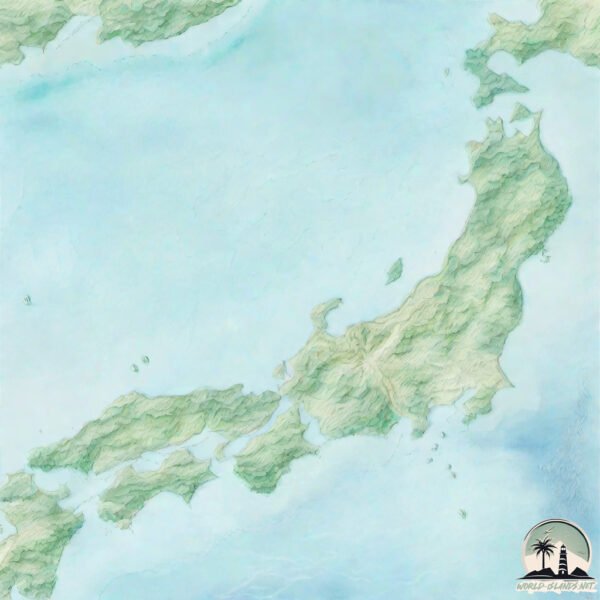Honshu is a Colossal Island spanning 228296 km² with a coastline of 12790 km.
Topography and nature of Honshu
Timezone: UTC+09:00Timezone places: Asia/TokyoMax. Elevation: 3776 m Fuji-sanMean Elevation: 437 mVegetation: Deciduous Broadleaf ForestTree Coverage: 59%
The mean elevation is 437 m. Dominating the island’s landscape, the majestic “Fuji-san” rises as the highest peak, soaring to impressive heights. The island is characterized by Mountains: High, steeply elevated landforms. Characterized by both a high maximum elevation (over 500 meters) and a high mean elevation, creating rugged, mountainous terrains on islands.
Dominating Vegetation: Deciduous Broadleaf Forest
Vegetation: 15 vegetation zones – Exceptionally Diverse Island
Infrastructure and Travelling to Honshu
Does the island have a public airport? yes .
Does the island have a major port? yes .
The mean population of Honshu is 460 per km². Honshu is Moderately Inhabited. The island belongs to Japan .
The name of the island resonates across different cultures and languages. Here is how it is known around the world: Arabic: هونشو; German: Honshū; Spanish: Honshū; French: Honshū; Portuguese: Honshu; Russian: Хонсю; Chinese: 本州
Continuing your journey, Ōmi Shima is the next notable island, situated merely km away.
The Secret Behind Japan’s Rapid Growth on Honshu Island!
Honshu, Japan's largest island, is the center of the country's economic, technological, and cultural power. But what's driving its ...
The Secret Behind Japan’s Rapid Growth on Honshu Island!
Honshu, Japan's largest island, is the center of the country's ...
Honshu, Japan's largest island, is the center of the country's economic, technological, and cultural power. But what's driving its ...
Japan: Off the beaten path on Honshu Island (Nagano, Hagi and Tottori)
Japan is a country I've dreamed of exploring for several years due to ...
Japan is a country I've dreamed of exploring for several years due to the rich culture and delicious food (I'm addicted to sushi and ...
Honshu Unveiled Japan's Largest Island 本州日本
Japan is classified as Developed region: G7: Group of Seven – Major advanced economies, including Canada, France, Germany, Italy, Japan, the United Kingdom, and the United States. The level of income is High income: OECD.
News – Latest Updates and Headlines from Honshu
Stay informed with the most recent news and important headlines from Honshu. Here’s a roundup of the latest developments.
Loading...
Social Media Posts about Honshu
Loading...
Please note: The data used here has been primarily extracted from satellite readings. Deviations from exact values may occur, particularly regarding the height of elevations and population density. Land area and coastline measurements refer to average values at mean high tide.


